Description
CHAPTER ONE
1.0Introduction
1.1Background of the Study
It is quite certain that the ultimate aim of every organization is to achieve efficiency and effectiveness in its management, which in turn enhances accomplishment of the organization goals. And in order to achieve this, much attention should be paid to gaining of the commitment of organizational participants to the mission, value and objectives of the organization. The nature of relationship that exists between the management and employees determine the extent at which efficiency could be achieved. Thus, friendly relationship should be encouraged in such organization in order to secure commitment and motivation towards organizational activities. Hence human resources management is highly needed.
Although the development of the concept Human Resources Management only attracted much attention just in the recent time, its functions have been in existence for a quite long time. Human Resources Management is as old as mans involvement in organizational form. Infact, Human Resources Management, though traditionally known as personnel Administration/Management or Labour Management has existed in one form or the other ever since the engagement of man in social or organizational activities. This is because, whenever people come together for a common purpose, certain Human Resources Management functions whether formal or informal were always performed. Later on, the process of managing people in organization gradually became formalized and attracted the attentions of many scholars and practitioners who worked tirelessly to scale Human Resources Management through as a specialized body of knowledge in the late 20th centenary.
The evaluation and development of Human Resources Management took different dimensions in various parts countries of the worlds. For instance, the period 1800 1914 according to Eze 2006:40, represented the earliest beginning when the pioneers in the field of human relations in industry made their appearance. Boulton and Watt introduced in their foundry in 1795 systems of selecting and training their workers. They also took into consideration the issue of fair wages, bonus schemes and sickness benefit schemes for their workforce. While this company was doing that, Robert Owen who was a textile manufacturer also saw the need to care for his workers so that the workers in turn would care foe his machines followed.
In the same vein, Factories Acts of 1833, 1867 and 1878 were passed in Britain to regulate hours of work and to establish conditions especially for women and children. Those Act were very significant in securing the welfare of the workers in the industry. Employers of labour initially resented state intervention and had rough time with state appointed Factory Inspectors, who worked tirelessly to ensure compliance. During that period, one of the most significant developments that occurred was the emergence of the Trade Union Movement. With that, collective bargaining developed. The first trade Union Congress was held in 1868, and 1885, and eleven members of the trade Union were elected to the House of Commons. The demanded and obtained workers improvement in both wages and conditions of work.
However, the story was quite different in the United Kingdom. In the 19th century, their organization faced very applying terrifying conditions because mangers regarded the workforce as human machines and paid negative attention to the welfare of the workers. What mattered to them was profit maximization. Thus, this marked the beginning or the birth of poor human resources management. And this had a very great adverse effect on the entire economy and administration of the Nation.
Meanwhile, in Nigeria Public Administration, it was the colonial masters that introduced wage employment during the colonial era as a means of securing workers commitment and motivation towards the performance of their functions in order to ensure efficiency and effectiveness in the administration of the Nation.
It could be borne in mind that earlier before the arrival of colonial administration, Human resources Management function was traditionally observed as each household constitutes its own workforce under the general managership of the household head the father Eze 2006:44 observed manager the father either hires labour usually paid in kind or engages the service of his inlaw and kindred group whom he would feed and provide for in agreed terms. He could also release his workforce family members to work on rotational basis for those who worked for him on agreed terms. It was an era of family enterprise, Ubeku 1973.3.
But when British colonial administration arrival in Nigeria in 1900, they ushered in commercial activities Buying and Selling and other forms of distributive trades stimulated the economy and wage employment emerged in the Nigeria scene. Government Departments employed labour for the service. Organized labour Nigeria came with Trade Union. The civil service union which emerged as early as in 1912 was follows in 1931 by the Railway workers union, and the Nigeria Union of Teachers. And later many others emerged. All these Unions had a common objective in view as the security and welfare of their members in the workplace. The role played by these Unions in Nigerian personnel administration was insignificant as their role was limited to clerical functions of documentation, filling, record keeping and occasional settlement of grievances and disputes. Not until the end of the Second World War, commercial and industrial concern paid little or even no attention to personnel issues. But at the end of the war in 1945, and the return of the war veterans who joined paid employment and empowered the Unions to work more for the improvement of working conditions of their members. The Unions also united and organized the General strike as a means of pressing for the improvement of conditions of service for Nigerian workers. The Union leader clashed frequently with expatriate managers. The fight continued until the need to set up a personnel unit to deal with public relation and labour matters was recognized. Later on, central labour organization in Nigeria came into existence in 1978 with the Trade Union Decree. Thus, the birth of the Nigerian labour congress NLC and the restructuring of the Trade Union facilitated the development of Human Resources Management in Nigeria.
Moreover, according to some prominent scholars, among them is Truss 1999, the development of the concept Human Resources Management can be traced to the work of Mc Gregory 1960 who introduced the notion while discussing forms of Management control. He used Theories X and Y in which Theory X describes the control model of management, while his Theory Y emphasizes the importance of integrating the needs of the organizational participants. Hence, the need for mutual commitment, which is one of the major concerns of Human Resources Management, this could be only be achieved if the management of such organization should embark on a distinctive approach to strategic development of a highly committed and skill workforce, maintenance of such employees labours Motivation and commitment in the performance of their duties toward the achievement of organizational goals. All these efforts are aimed and geared towards achieving workers commitment, which will in turn yield effectiveness and efficiency in the heart paining story that this function of Human Resources Management is not performing to its expectation in Nigeria and this has affected the Nigeria Public Administration greatly.
1.2 Statement of Problems
As we could see, Human Resources Management focuses on the integration of human resources policies and practice with the business plan of the organization and the use of human resources policies and practice to reinforce appropriate organization culture, that not withstanding.
According to Eze 2006, some writes have expressed reservation about this new approach to people management.
The questions here are:
i. Has Human Resources Management performed to its expectation in the Nigeria Public Administration
ii. Has efficiency been achieved in the Nigeria Public Administration through Human Resources Management
1.3 Research Questions
The questions of this study include:
i. Do poor Human Resources Management affect the Nigeria Public Administration
ii. Is inefficiency in the Nigeria Administration a byproduct of poor human resource management
iii. Could efficiency be achieved in Nigeria Public Administration if Human Resources are well managed

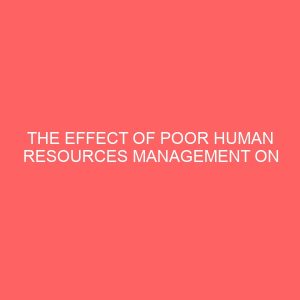

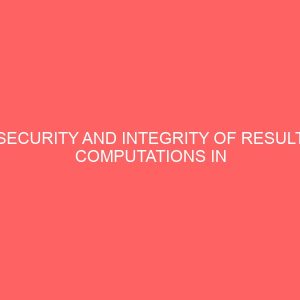

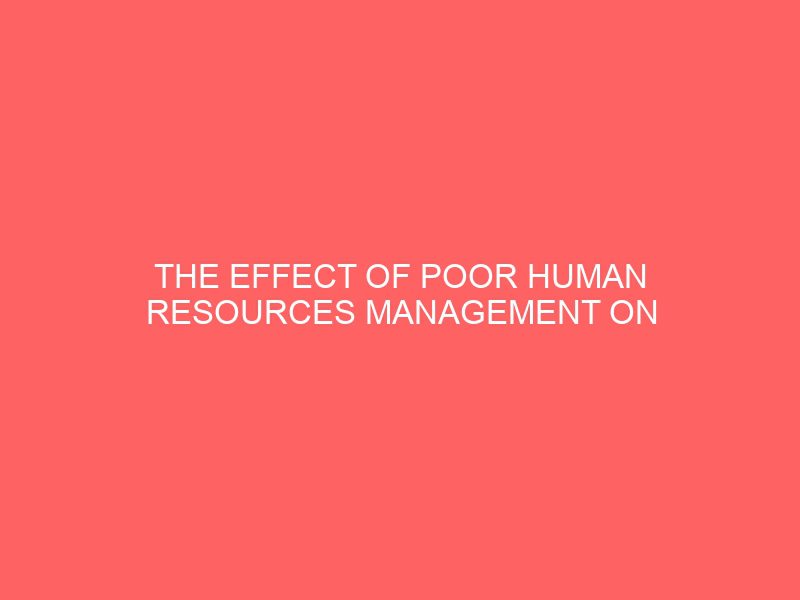
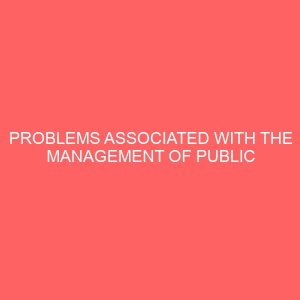
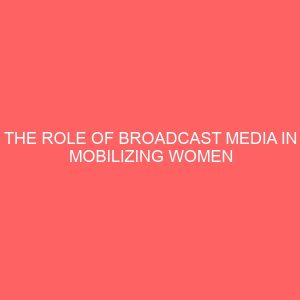
Reviews
There are no reviews yet.